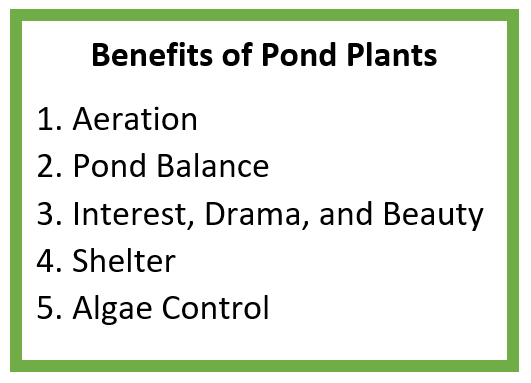How to Oxygenate Ponds without electrical equipment
There may be a wide variety of reasons why you need to oxygenate your pond without electrical equipment; the pond may be too far away from a mains source, you have no sockets or you want to save money. Luckily, there are a few easy ways to aerate your pond without the use of electrical equipment; they may not be as powerful as a dedicated mains powered air pump, but these are useful for smaller gardens or to supplement an aeration system in a larger pond.
Aeration is incredibly important for every pond; regardless of whether it has fish in it. Oxygen helps to support life, which improves fish health and encourages wildlife to visit your pond. It also helps to keep the pond healthy and keeps away mosquitoes! Please see our blog post on the Benefits of Aerating your Pond.
Signs of Poor Aeration (Useful Blogs: Signs of Low Oxygen in Ponds, Why do Fish gasp at the surface of the Pond?)
If you see any of the following signs, your pond will need extra oxygen:
• Fish gasping at the surface of the pond or at any entry points for water (Waterfalls, fountains, streams).
• Foul odours - decaying organic matter (Fish waste, plants, sludge) can indicate that there is a lack of oxygen, water movement or filtration.
• Rapid algae development - This can be a sign of poor aeration and filtration.
Can a pond harbour fish without mains powered aeration? (Useful Blogs: Pond Sludge, Bacteria: The Importance of Healthy Bacteria)

If you have fish in your pond, the main priority should be a mains powered pump and filter set. This is to remove sludge and waste before harmful chemicals can build up in your pond. You’ll also likely need a UV clarifier (which is built into most filters) to keep green algae away. Provided you have a suitable pump and filter, avoiding electrical aeration is perfectly safe. Extra aeration should help to improve the quality of water by increasing the healthy bacteria in your pond, preventing fish diseases, and creating a healthier environment. Please note that aerators should supplement your pump and filter system in a pond with fish; aerators should not replace them.
If your pond does not have any fish, you probably won’t need a pump and filter. It's normally kept healthy through plants, bacteria, and some form of water movement. In these cases, a solar powered fountain would help to keep the water circulating (to prevent stagnation) and aerated.
1. Install Pond Plants (Useful Blogs: Pond Plants, 5 Benefits of Pond Plants)
The first method we recommend to improving oxygen levels in all ponds (from small garden ponds to lakes) is to add more pond plants. We recommend that you aim to cover at least 50% of the pond in plants and try to include a diverse range of plants (including oxygenators, marginals, ornamentals, floating plants, and lilies!)
All pond plants will help to release oxygen into the water, but they can also remove excess nutrients from the pond (like nitrates and phosphates); this helps to reduce pond problems like green algae and sludge. Not only are pond plants excellent oxygenators, they also help to provide shelter for your fish so they can hide from predators (like Herons) and they can lay their eggs around the plant when reproducing.
.jpg)
Fountains are excellent aerators; and a solar powered unit will eliminate electrical costs! They are great if your garden gets plenty of sunlight and pumps, like the PondXpert SolarShower units, include a battery for longer operation. Any excess power generated by the pumps will charge the battery, allowing the pump to run at night or when the weather is overcast.
Fountains are great at aerating ponds because they push water from the bottom of the pond to the top. The water at the bottom of your pond tends to be the least oxygenated, so the circulation helps to improve oxygen levels throughout the pond. The fountain spray above the surface helps to dissolve oxygen into the water. Not only are you getting a lovely centre piece for your pond, but you’re also helping to improve the quality of the water at the same time.
3. Install Solar Powered Air Pumps (Useful Blogs: Top 5 Benefits of Solar Products)
Like the above, solar aerators are powered by sunlight and don’t have any running costs. Likewise, they will work best in ponds that receive a lot of sunlight and can include a battery, like the PondXpert SolarAir Plus units. Alternatively, there are solar powered units that do not include a battery, like the PondXpert SolarAir units (not the Plus models).
These normally include a solar panel and a pump that are both located outside of the pond and a length of airline and air stones which are connected to the pump and located at the bottom of your pond.
While solar air pumps won’t circulate your water as much as fountain pumps, they are able to pump more oxygen into the pond. They also work very well alongside a mains powered pump and filter system, or to aerate a wildlife pond that doesn’t have any fish in.
You may also find the below blogs useful:
• Can you run a pond without electricity?
• Pond Problems
• Top Tips
If you have any queries, please email us on info@pondkeeper.co.uk.